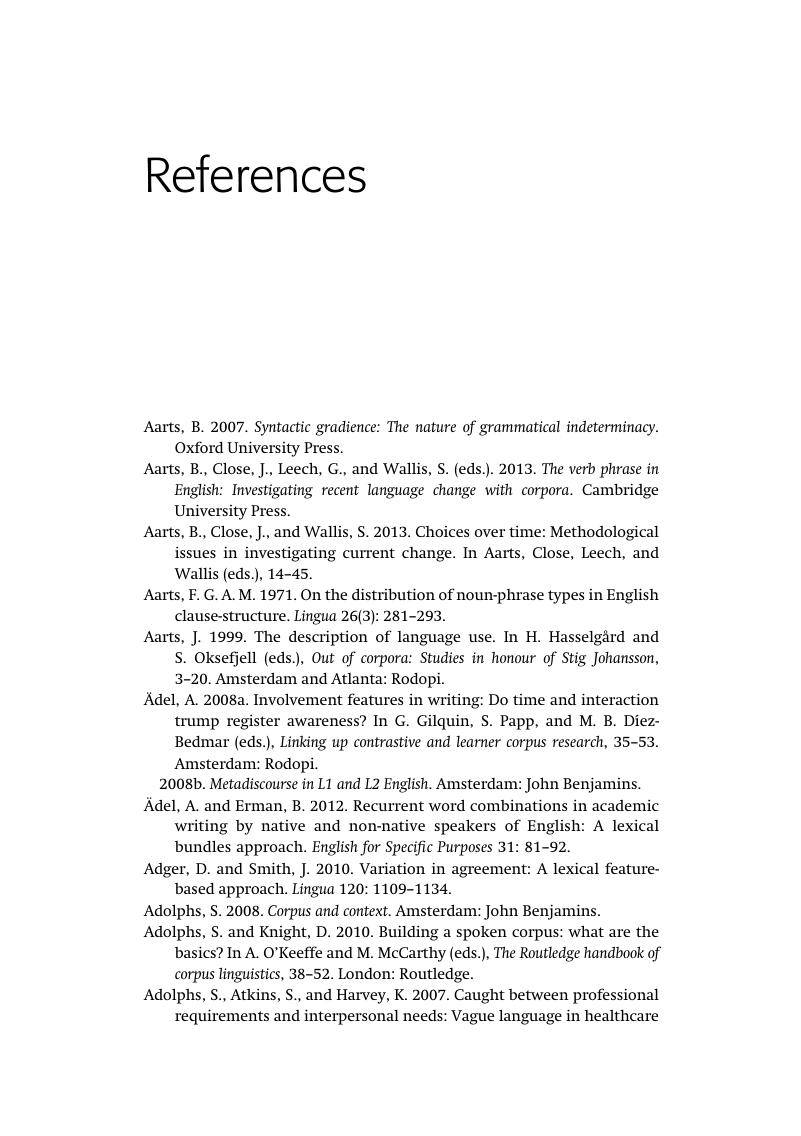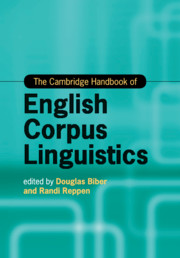Book contents
- The Cambridge Handbook of English Corpus Linguistics
- The Cambridge Handbook of English Corpus Linguistics
- Copyright page
- Dedication
- Contents
- Figures
- Tables
- Glossary
- Contributors
- Introduction
- Part I Methodological considerations
- Part II Corpus analysis of linguistic characteristics
- Part III Corpus analysis of varieties
- Part IV Other applications of corpus analysis
- References
- Index
- References
References
Published online by Cambridge University Press: 05 July 2015
- The Cambridge Handbook of English Corpus Linguistics
- The Cambridge Handbook of English Corpus Linguistics
- Copyright page
- Dedication
- Contents
- Figures
- Tables
- Glossary
- Contributors
- Introduction
- Part I Methodological considerations
- Part II Corpus analysis of linguistic characteristics
- Part III Corpus analysis of varieties
- Part IV Other applications of corpus analysis
- References
- Index
- References
Summary

- Type
- Chapter
- Information
- The Cambridge Handbook of English Corpus Linguistics , pp. 537 - 617Publisher: Cambridge University PressPrint publication year: 2015

